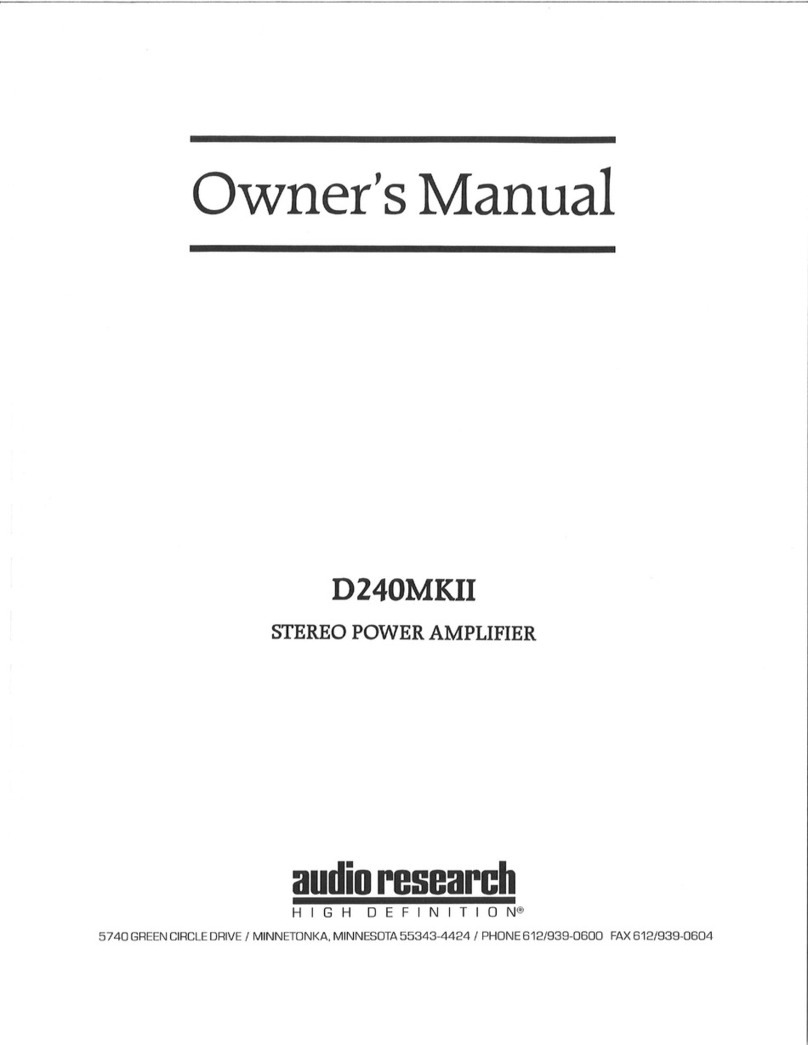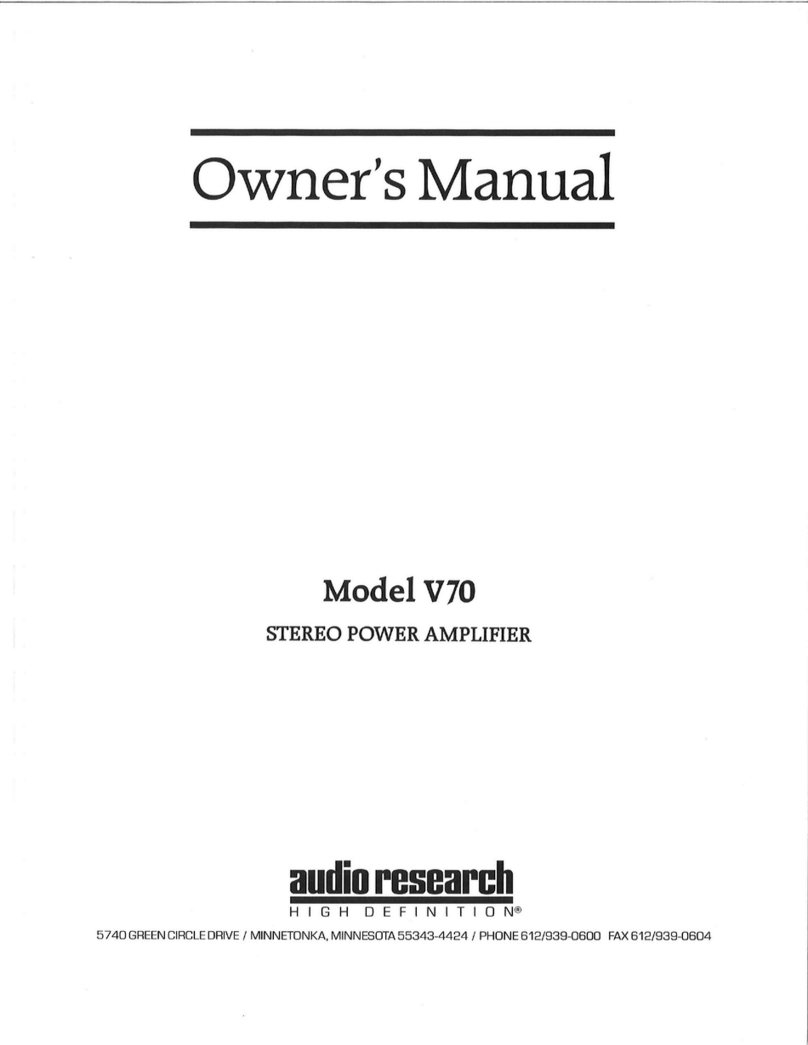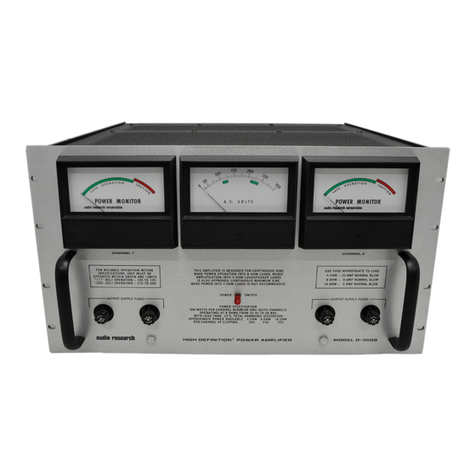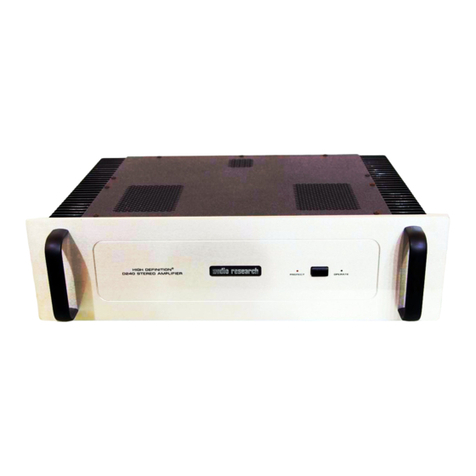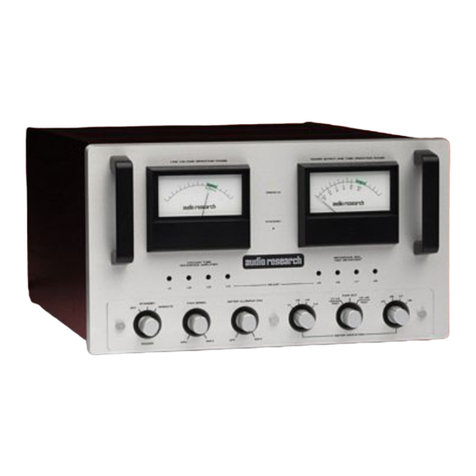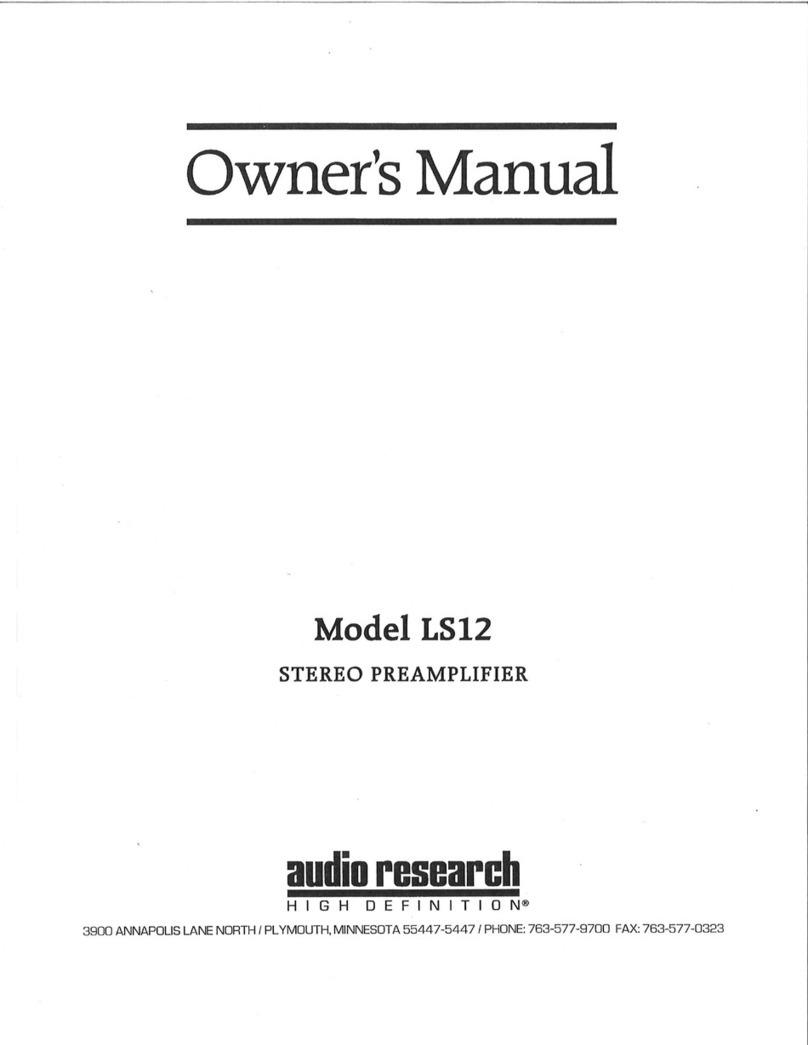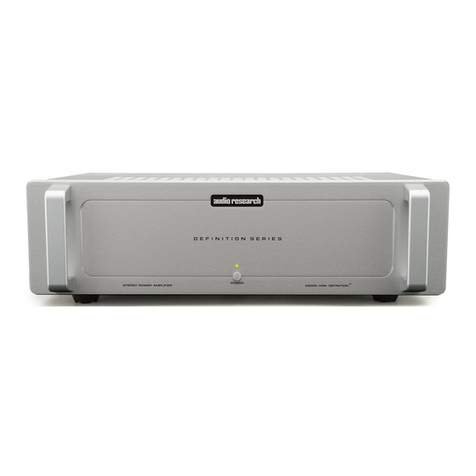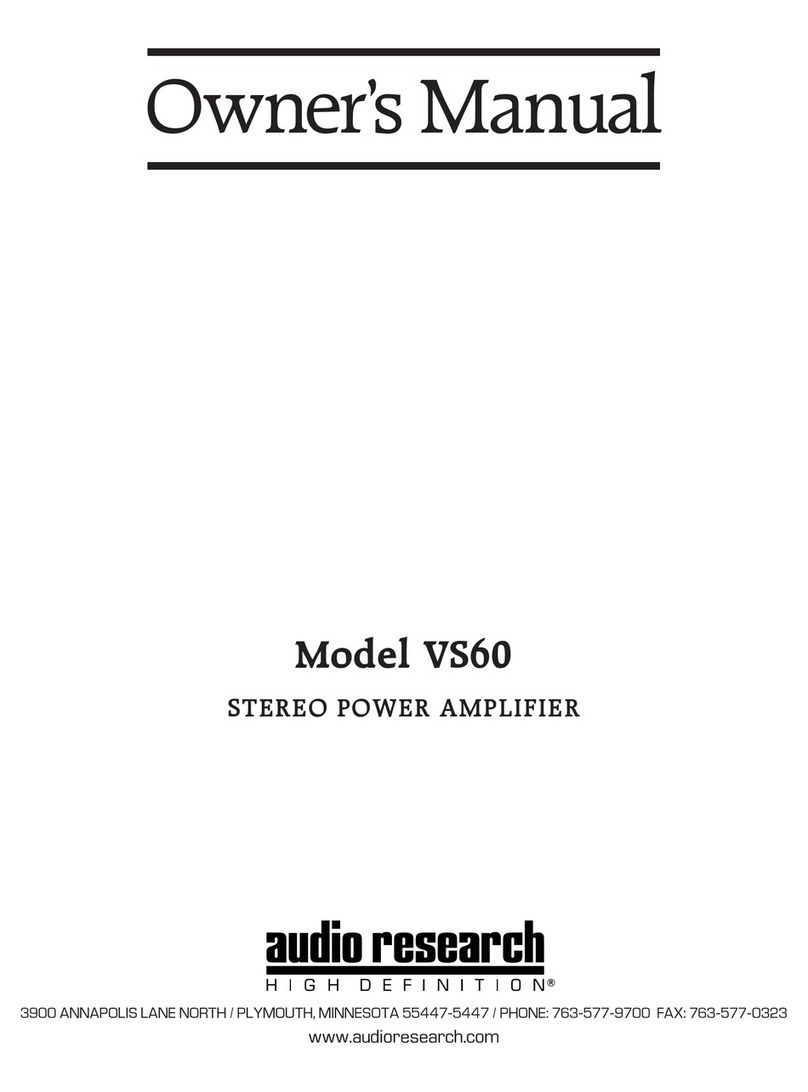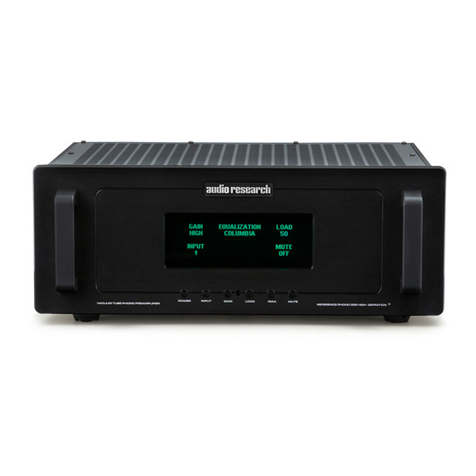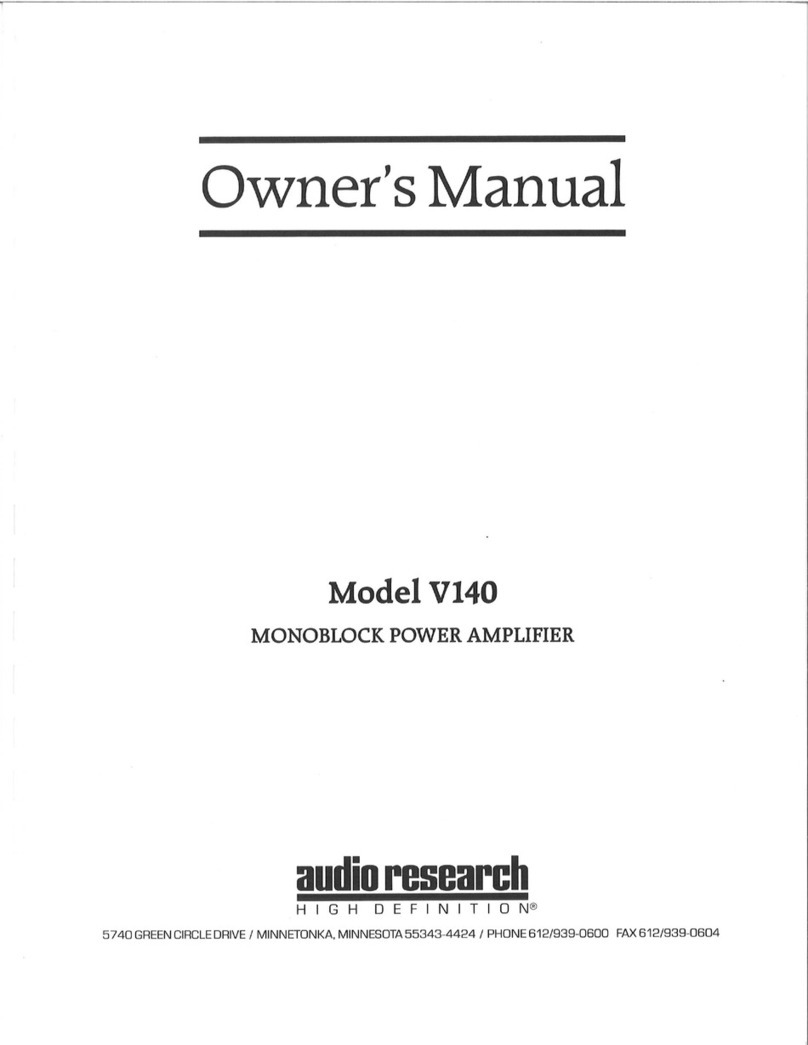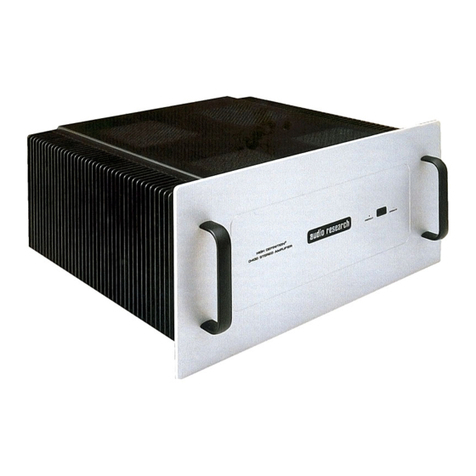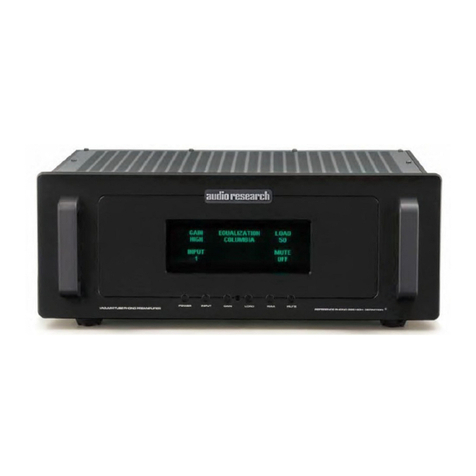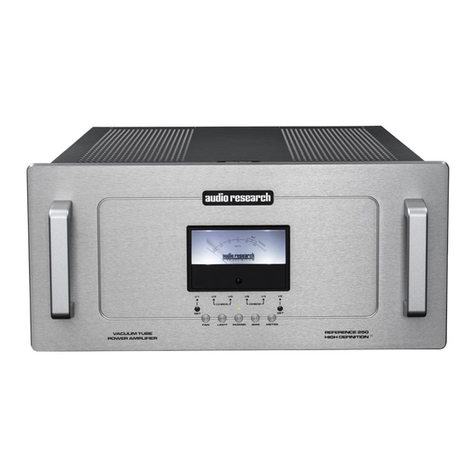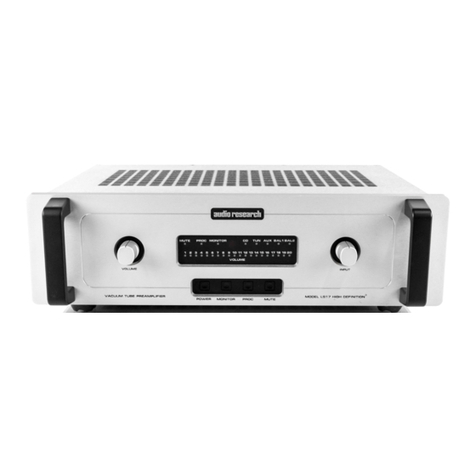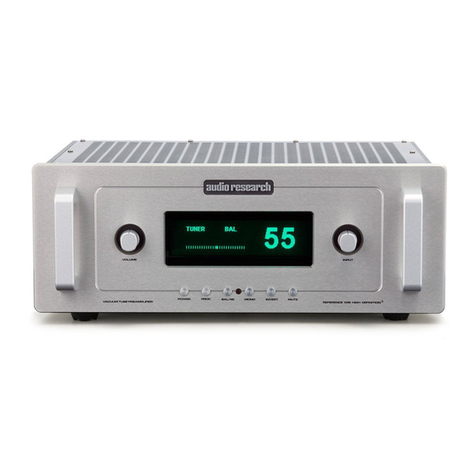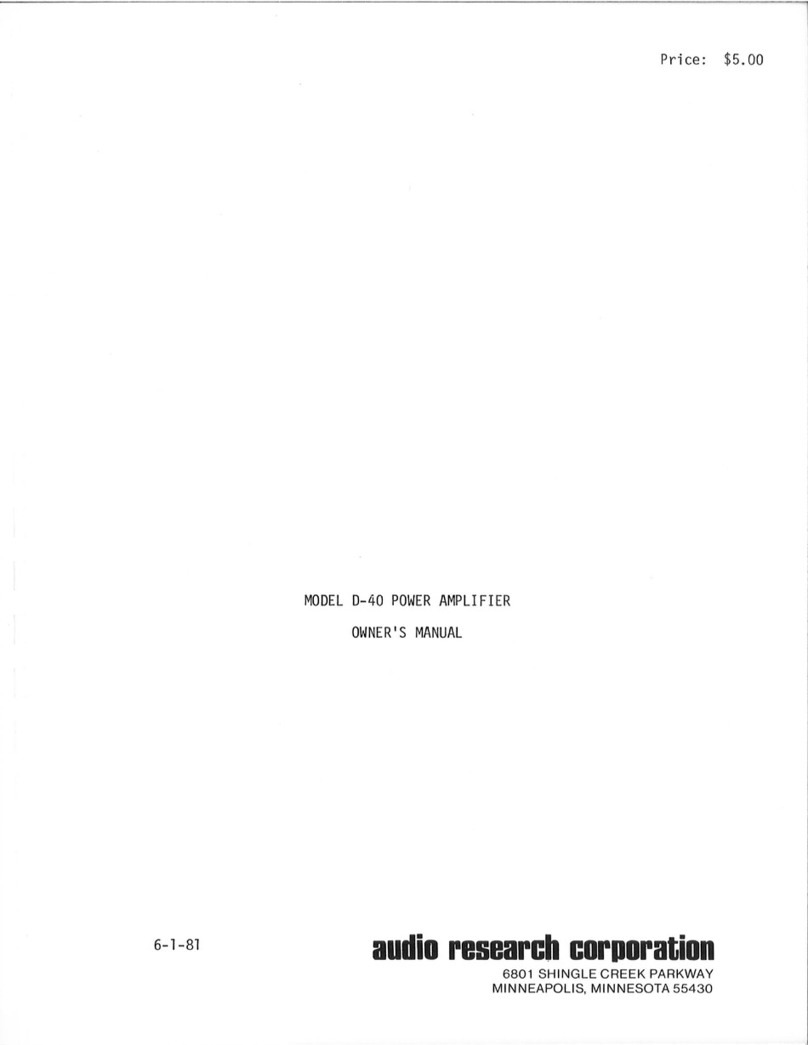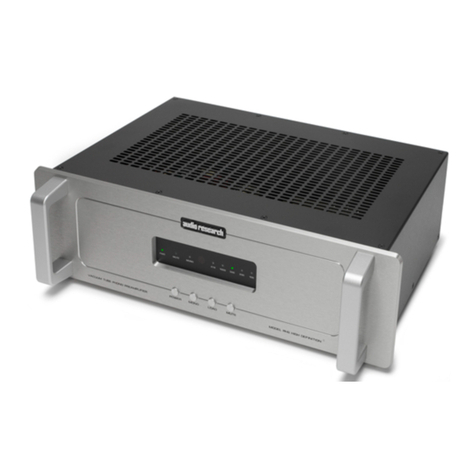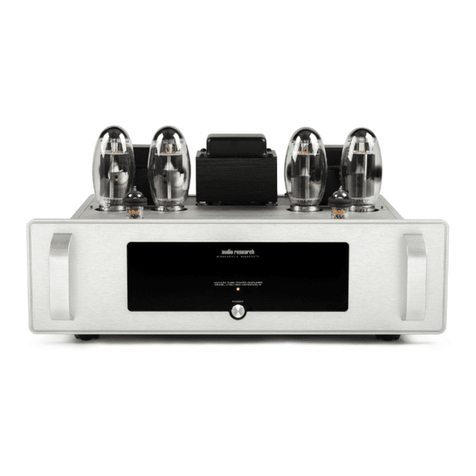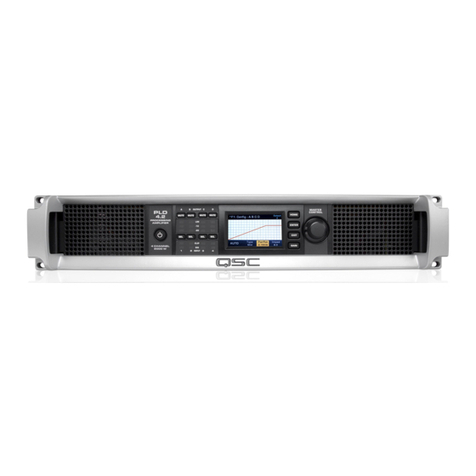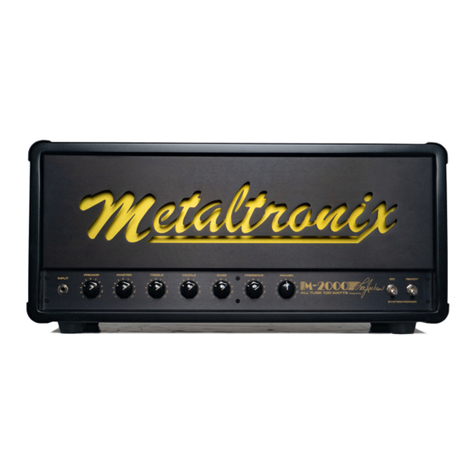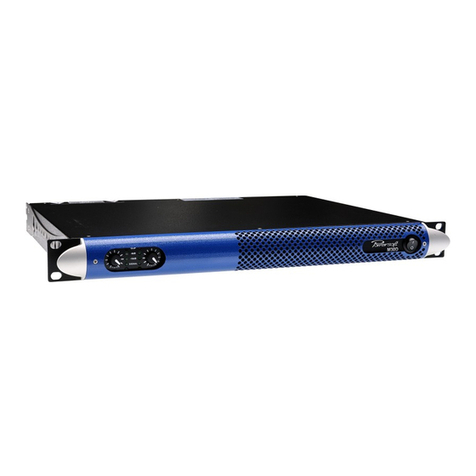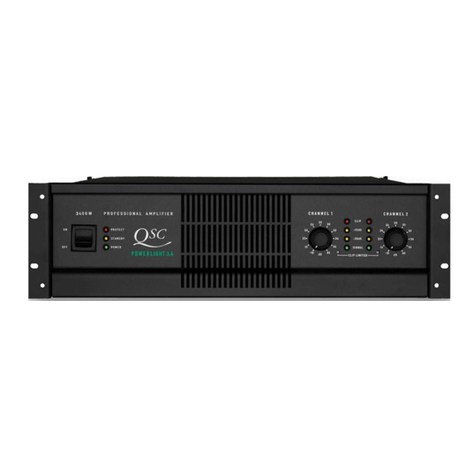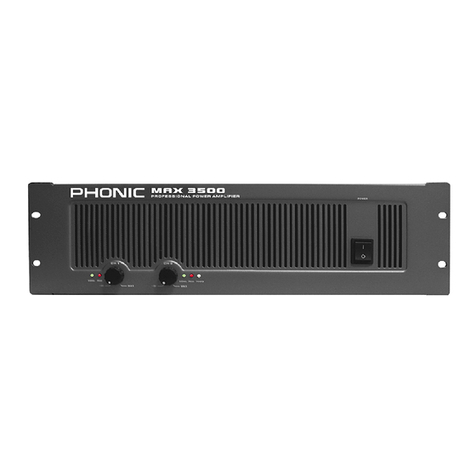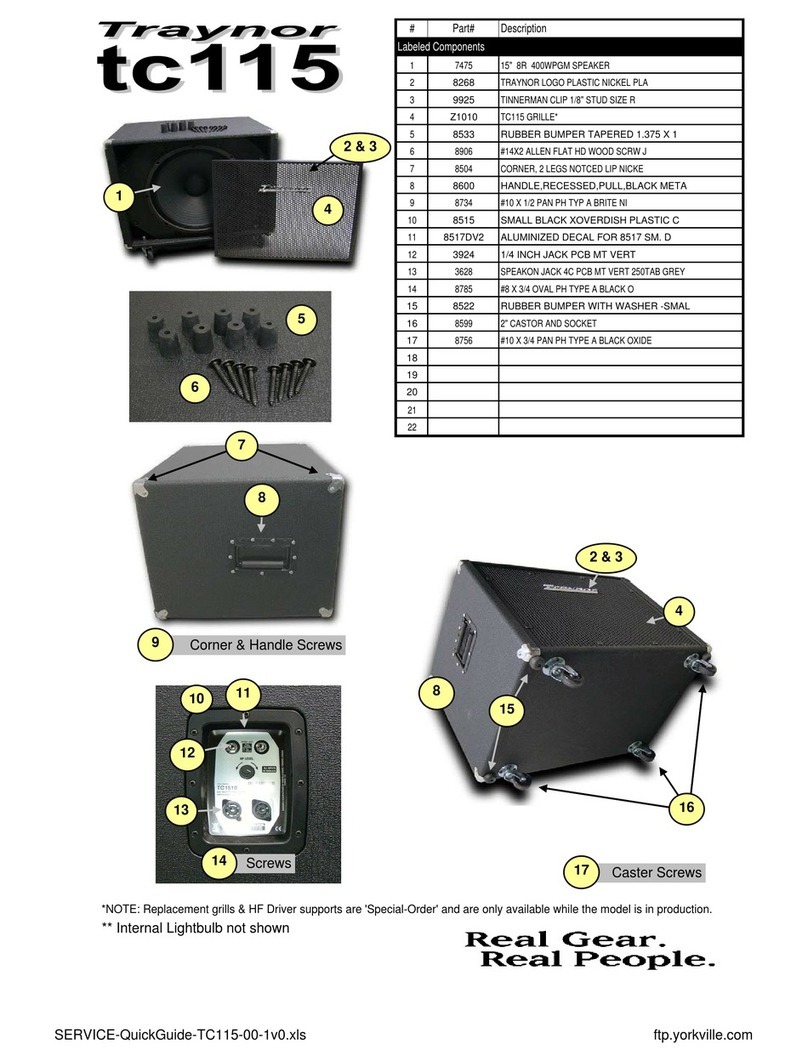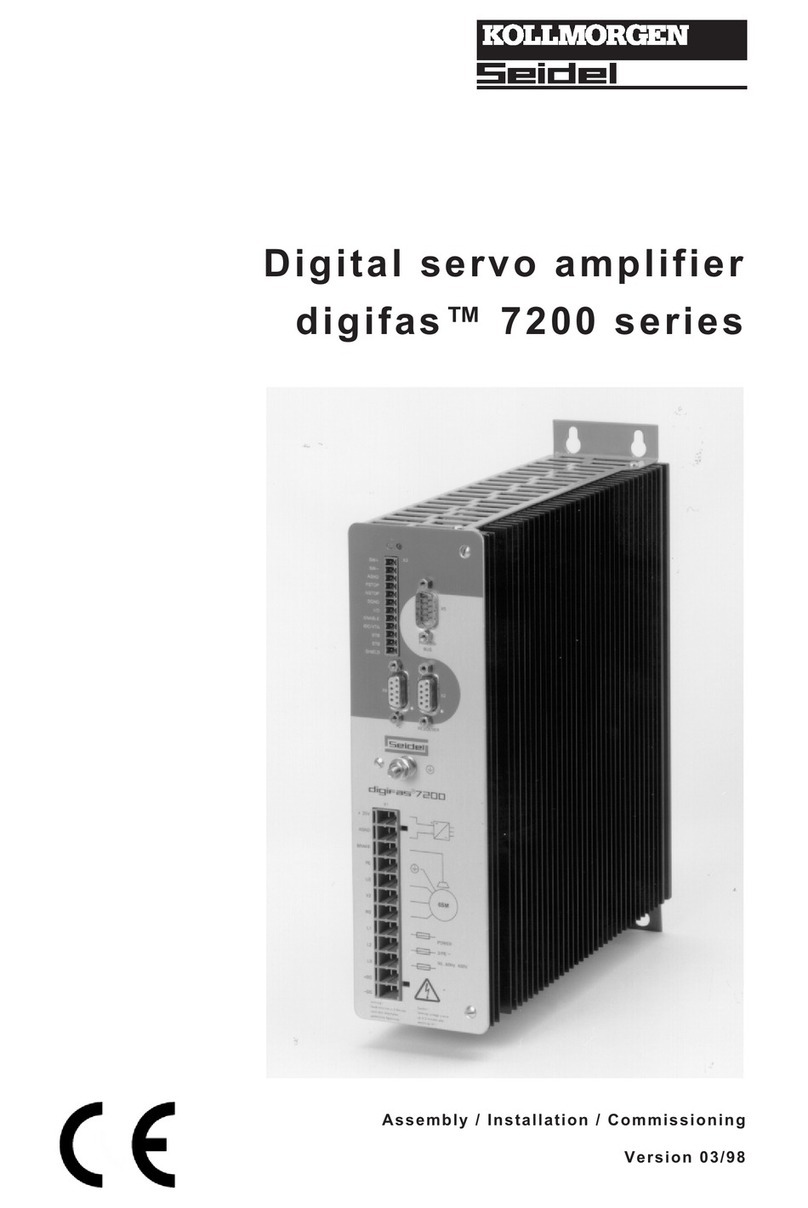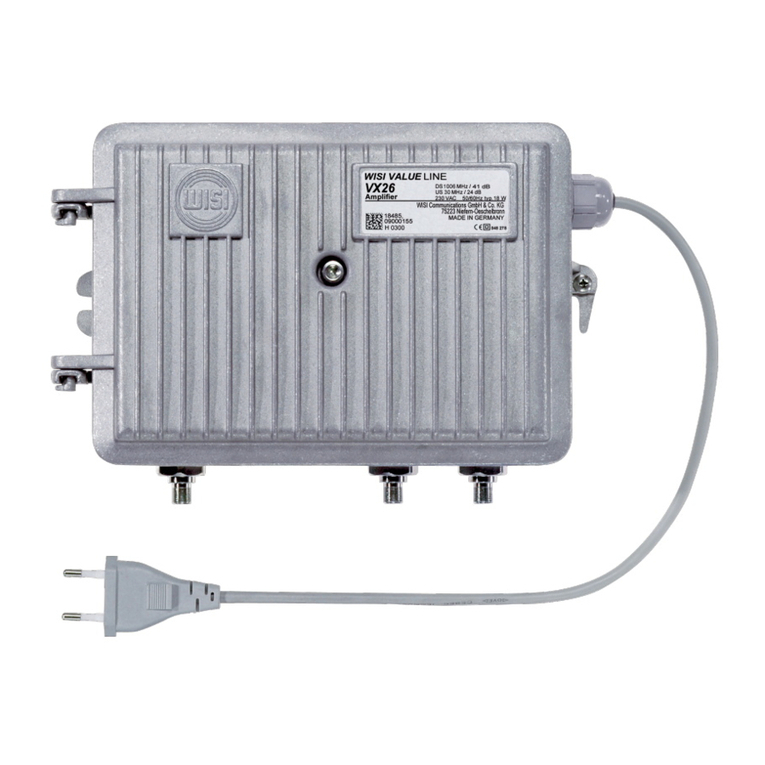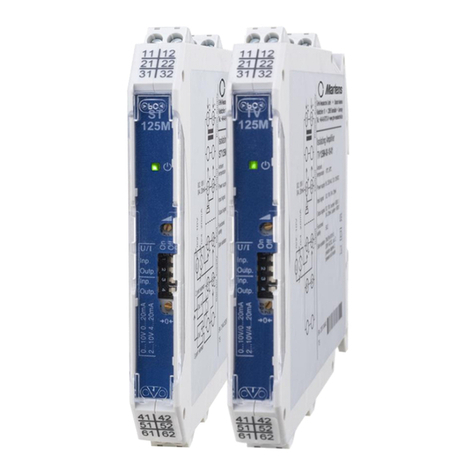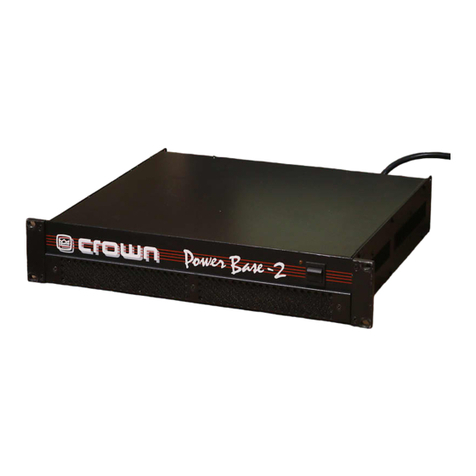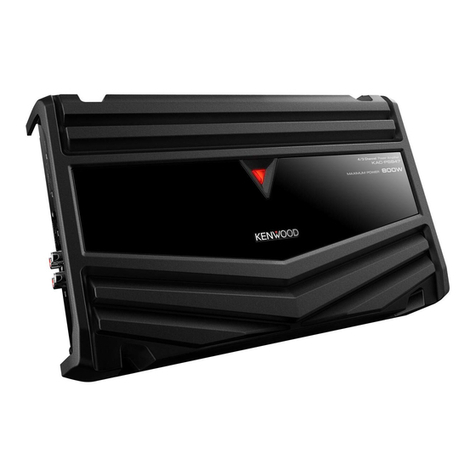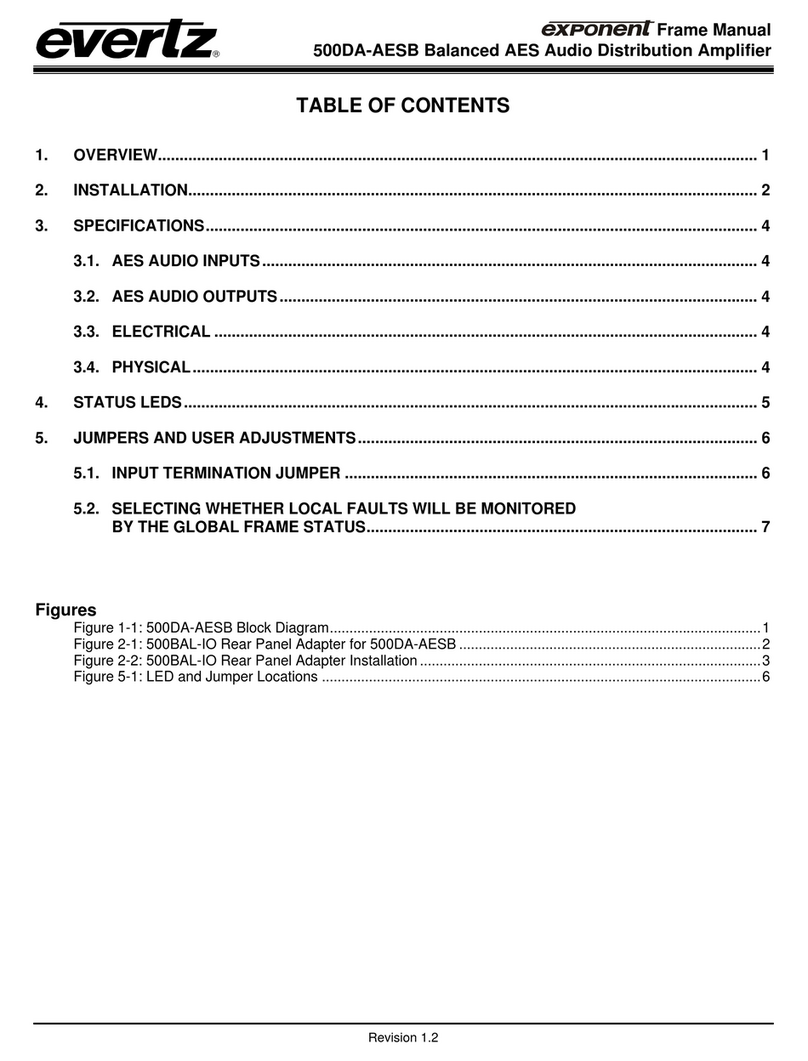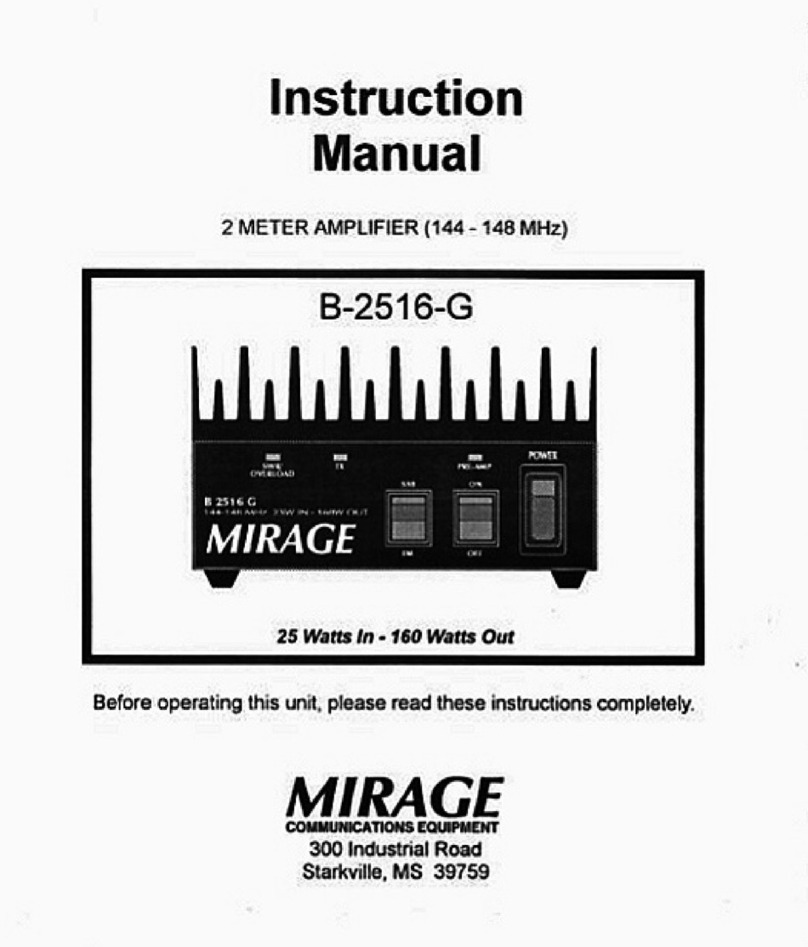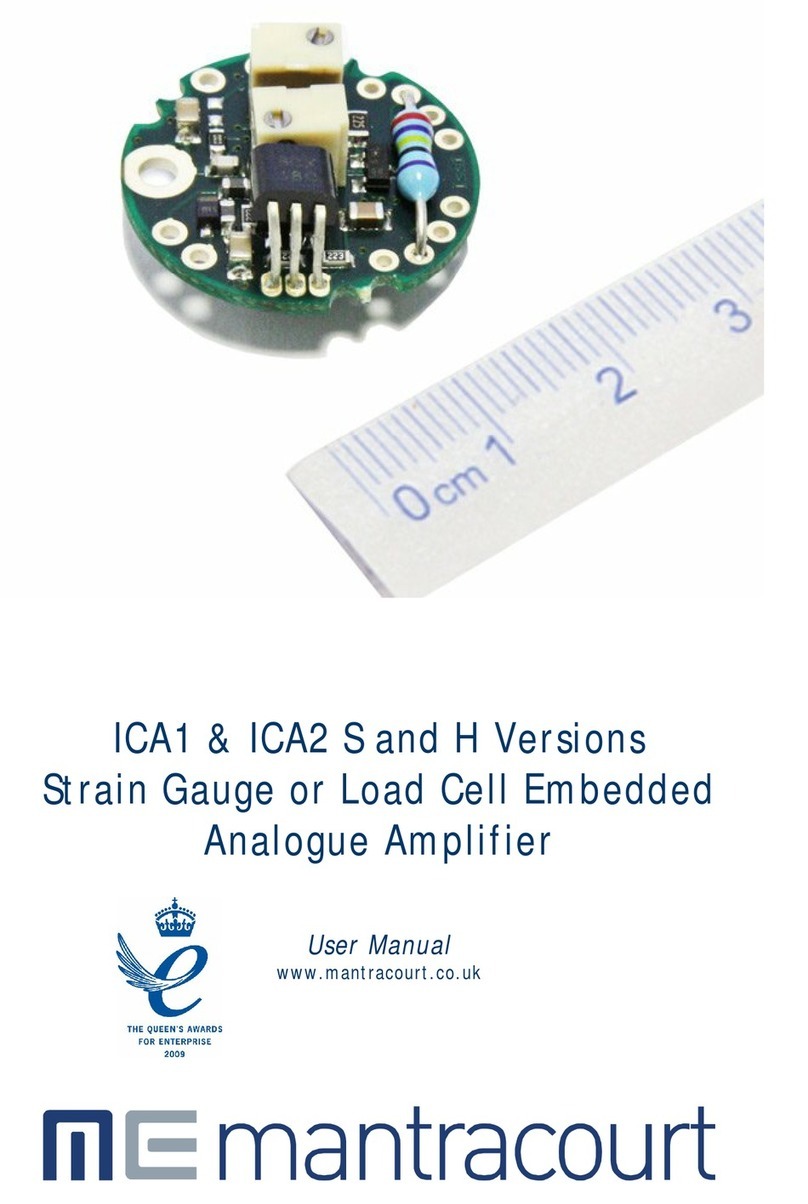
7
Description of Controls
Front Panel Controls
The Reference 10 has one microprocessor-driven
rotary control and two buttons (Power and Mute).
Rotary control: Adjusts Volume (output level) up or
down for both L and R channels, and adjusts the
balance when the balance function is selected on
the main screen. Volume control is also selectable
via Vol UP and Vol DN buttons on the remote control.
Volume adjustment is indicated in the display window
by numeric digits on 0–103 scale.
Do not turn volume up beyond normal listening
levels when ‘mute’ is engaged to avoid unexpected
or possibly damaging sound levels. Reduce volume
level whenever changing input sources, even when
muted.
POWER ON/OFF: (left button beneath rotary control)
Supplies power from A.C. wall outlet to preamp;
indicated by active display window. Function also
on remote control.
For approximately 40 seconds after start up, ‘Mute’
appears in the display window and ashes until the
automatic muting cycle is completed. This also
occurs in the event of power interruption. Upon
completing the cycle, ‘Mute’ will cease ashing. The
preamp will remain muted until normal operation is
selected by pressing the ‘Mute’ button.
MUTE: (right button beneath rotary control) When
activated, electrically mutes all output of the
preamplier; indicated by ‘Mute’ in display window.
This control should be activated before switching
inputs, changing connections or shutting down your
audio system to help protect your amplier and
speakers from unexpected signal pulses. When
deactivated, ‘Mute’ disappears from the display
window allowing normal operation. Function also
on remote control.
The Reference 10 also has automatic muting to help
protects system components during A.C. power
interruptions or low line voltage. When sensing
these conditions, the preamp automatically goes
into ‘Mute’ and disables all outputs. The 40-second
warm-up timer will restart and ‘Mute’ will ash in the
display window when normal power conditions have
been restored.
Note that automatic muting is only designed to
protect against power line interruptions or severe
voltage drop. It will not mute in the event of subsonic
transmissions from a faulty input source, amplier
failure or speaker malfunction.
Remote Control only Functions
INPUT 1-6: Allows direct selection of each of the 6
inputs of the Reference 10.
PROCESSOR (Pass Thru): Selects external A-V (home
theater) processor as input source and controller of
volume level for R and L channels. Reference 10
provides Unity Gain when this input is selected.
When engaged, ‘Pass Thru’ will appear in the display,
and the gain is xed and not adjustable. The preamp
will also mute the input after ‘Pass Thru’ is engaged.
Before unmuting the ‘Pass Thru’ input,
be sure to turn the volume down on the
home theater processor. Never connect
a source with a xed level output (DVD
player, tuner, CD, etc.) to the ‘Pass Thru’ input or the
amplier(s) and speaker system could be damaged
when the Reference 10 is unmuted.
BAL/SE: Select as appropriate for each input.
For source components having balanced (XLR)
connections to the Reference 10, select BAL. For
single-ended (RCA) sources, select SE. Once
selected for an input source, the setting is memorized.
INVERT: Inverts absolute phase of the output signal.
MONO: Sums L and R input for mono output from
any source selected.
DISPLAY DOWN/DISPLAY UP (DSP DN/DSP UP):
Decreases/increases display intensity, offering 6
levels of brightness and display ‘off’. In display
‘off’ mode the display will illuminate for 10 seconds
when any button (except Power on/off) is selected,
allowing for control function navigation.
BALANCE (BAL L/BAL R): Adjusts balance left or right.
Adjustment appears in display window as movable
marker on bar graph. Useful for compensating for
uneven speaker placement or imbalanced output
from a phono cartridge.
HOURS: When pressed, displays number of operating
hours vacuum tubes have been in service. WARNING:
After replacing tubes, this function should be reset
to ‘0’. See further instructions under ‘Hours Meter’ in
the section ‘Interactive Touch Screen Operation’ for
details.












